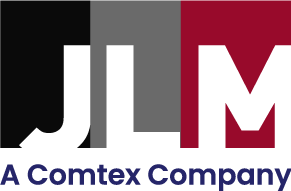At Comtex, our strength lies in our diversity. We are not just a single entity but a collective force formed by multiple companies within the Comtex Group. This structure empowers us to deliver a wide range of trading services while remaining agile and competitive in the ever-evolving financial landscape.
The entities listed below are all part of the Comtex Group and are classified as associated entities under the Corporations Act 2001 (Cth), typically due to common directorship and/or common shareholding.
For clarity and understanding, here is a list of all entities within the Comtex Group, along with some information about what constitutes an associated entity.
Comtex Group Entities

Comtex Group Pty Limited (35 162 178 565)
Comtex Business Services Pty Ltd (25 641 279 772)
Comtex BCMS Pty Ltd (87 670 182 822)
Comtex Cellular & Wireless Pty Ltd (32 670 160 273)
Comtex Communications Pty Ltd (17 669 657 309)
Comtex Electrical Pty Ltd (15 670 182 957)
Comtex Security & Defence Pty Ltd (82 165 911 624)
Comtex (QLD) Pty Ltd (48 627 709 951)
Comtex Holdings Pty Ltd (55 669 425 361)

PON Project Pty Limited (77 638 893 384)
PON Projects QLD Pty Limited (79 638 893 393)

Koolie Communications Pty Ltd (84 637 710 788)

Comtex Security & Defence Pty Ltd (82 165 911 624)
Trading As: JLM Integrated
What is an Associated Entity
In the context of the Corporations Act 2001 (Cth), the term “associated entity” carries significant legal implications. This Act serves as a cornerstone of Australian corporate law, delineating regulations that govern companies operating within the country. Broadly speaking, an associated entity refers to an entity that shares some form of relationship with another entity.
Section 50AAA of the Corporations Act uses 6 subsections to distinguish what kinds of relationships involve an associated entity. It states that an entity (the associate) is an associated entity of another entity (the principal) if any of the following subsections are satisfied:
- The associate is either a holding company, subsidiary or a subsidiary of a holding company of the principal;
- The principal controls the associate;
- The associate controls the principal and the operations, resources or affairs of the principal are important to the associate;
- The associate has a qualifying investment in the principal, the associate has significant influence over the principal and that influence is important to the associate;
- The principal has a qualifying investment in the associate, the principal has significant influence over the associate and that influence is important to the principal; or
- A third company controls both the principal and associate and the operations, resources or affairs of the principal and associate are both important to the third company.
Implications of Associated Entities
Understanding the classification of associated entities is essential for complying with regulatory requirements, managing corporate relationships, and assessing potential conflicts of interest. It influences various aspects of corporate governance, financial disclosure, and risk management, shaping the way businesses structure their operations and partnerships.
The associated entity status provides us with the opportunity to leverage economies of scale, simplifying compliance processes such as securing single insurance coverage that encompasses all entities and grouping work cover and workers compensation requirements.
See Also:
What is Grouping Insurance for Related Businesses? | icare (nsw.gov.au)
associated entities – Fair Work Ombudsman

